Some firearm trends come and go. Ported barrels and compensators are one of them. They’re currently on the rise again, with many new, upgraded, pistol models coming with barrel porting or a compensator from the factory.
But should you jump on this train? What exactly are ported barrels and compensators, and why should you want one?
What is barrel porting/compensation?
So, what does it mean when a barrel is ported? In this case we are referring to holes in top of the muzzle end of the barrel, which direct gasses upward. Compensators work in a similar fashion, they’re just located in front of the muzzle and affixed to the barrel, typically via threads. What they do: Control recoil by venting gasses upward as they escape the muzzle to counteract muzzle rise. This helps bring you back on target faster and keeps you shooting accurately.

Ported barrels and muzzle compensators are similar, but they have a few unique characteristics of their own. Porting uses less space and keeps the firearm just as compact as it was before. It is also integral to the barrel, so it can never get knocked loose or fall off. However, because the bullet travels through the barrel, these ports can also scrape lead/copper shavings off, which can possibly fly out through the ports. I’ve never had this happen, nor seen it in any serious manner. Another common concern with ported barrels is bullet energy loss (more on this later).
Compensators do not bleed off energy, as you retain the full length of your barrel. However, most pistol designs with a compensator feature a shortened barrel to account for the overall length with the addition of the comp. Think SIG P365 XMACRO Comp vs. TacOps. The former features a 3-inch barrel similar to the one found on the standard P365, while the latter incorporates a 3.7-inch barrel similar to the one found on the XL model.
Although, if you go with a threaded barrel and compensator combo (which is more common), you can basically run any pistol you like. You will just need to test your barrel/compensator setup to ensure reliability. It may require you to swap your recoil spring to account for the pressure change and weight on the end of the barrel.
Benefits
As you may imagine, the main advantage to having a ported barrel or compensator is reduced recoil. This allows for a faster recovery time between shots, and therefore, faster rapid-fire accuracy. By lowering your spit times (time between shots), you can get more shots on target faster and improve your defensive capabilities.

Porting is also good for those who may be more recoil sensitive. It may allow you to shoot a caliber you would otherwise be unable to properly control. It may make the difference between 9mm and .380 perhaps, which is a definite defensive advantage.
Last but not least, let’s not forget the most important reason for owning a pistol with a ported barrel or compensator: How cool it looks! I’m kidding, but there’s no denying that it does add some style and turns some heads at the range. We all like to have some fun tweaking and upgrading our firearms. Even if you only use it for range plinking, a compensator can be a blast.
Drawbacks
With all the benefits to ported barrels and comps, there are some drawbacks. As I mentioned earlier, because you bleed off some of your gas pressure through the ports, you will get lower velocities out of the same ammo. This is usually only a slight loss, but exactly how much will depend on the exact caliber and barrel length.
High-pressure rounds, such as .357 Magnum, tend to be more affected than low pressure rounds such as the .45 ACP. This lower velocity translates to fewer ft/lbs of energy at the muzzle and on the target. Further, modern hollow points are designed to expand at certain velocities and their performance may be diminished with the loss in pressure.
Another common concern, especially with ported pistols, is excessive muzzle flash. I will say that it is a bit brighter than a comparable non-ported firearm, but it’s not obstructive. Some may worry that the bright flash will take away your night vision during a possible self-defense entanglement. This is not something that concerns me and it hasn’t been an issue so far. Besides, you should be using a flashlight or weapon light for proper target identification in low light. This is far brighter than the brief muzzle flash should you need to fire.

You may also find that your ported firearms require a bit more cleaning and maintenance due to the excess carbon fouling coming from the ports. Ported firearms will have more unburnt powder residue, and this fouling can escape through the ports and cause malfunctions. Further, the same holes that allow gas to escape are more points where dirt can enter. This may cause a barrel obstruction or further induce malfunctions. Therefore, ported firearms are not the best choice for a woods or outdoor gun that may get dropped. For an EDC pistol, it will require more frequent maintenance to keep dust and lint out of the action.
Firearm Selection
Don’t let these deter you. When employed properly, a pistol with a ported barrel or compensator is incredibly effective. One of my top choices is the Smith and Wesson Shield Plus Performance Center. Available with either a 3- or 4-inch ported barrel, the M&P Shield Plus is perfect for concealed carry and can double in a home defense role. I have the 3-inch version and it has been nothing but reliable. It also features noticeably less felt recoil than the standard Shield.
Another pistol I have had good experience with is the ATI Thunderbolt-E 1911. This older “Enhanced” model incorporates a ported barrel, Picatinny rail, and target sights. My father and I picked this pistol up ‘used’ years ago and originally had some reliability issues. After a quick recoil spring swap, it was ready to rock.
SIG Sauer offers several upgraded models with a built-in compensator straight from the factory. No installation, no threads to come loose, just shooting. The P365 XMACRO, P320 AXG Legion, and XFive Legion all incorporate a compensation portion machined into the end of the slide.
Staccato makes a high-end race gun with a compensator in the XC, and also offers some limited versions of the P and C2 line with a comp. Springfield has a version of the Hellcat OSP with a compensator. This makes a good competitor to the P365 and Shield versions.
For the wheel gun fans, the S&W 586 L-Comp and Model 19 Carry Comp are at the top of the heap. These L and K-Frame revolvers are designed for defensive carry. The Taurus Tracker series offers similar utility, in a slightly larger footprint and lower price range.

Don’t forget, you can also buy a threaded barrel and thread-on compensator or aftermarket ported barrel for other pistols. These may need new springs or modification for reliable function depending on the firearm, but can be a great way to use a gun you already own.
Final Thoughts
Barrel porting and compensation is not the end all be all by any means, but it can provide some added utility. Self-defense with a firearm is about getting accurate hits on your target. This can help you shoot more powerful rounds, faster, more accurately. What’s better than that?
Do you like ported barrels and compensators? Why or why not? Share your thoughts in the Comment section.

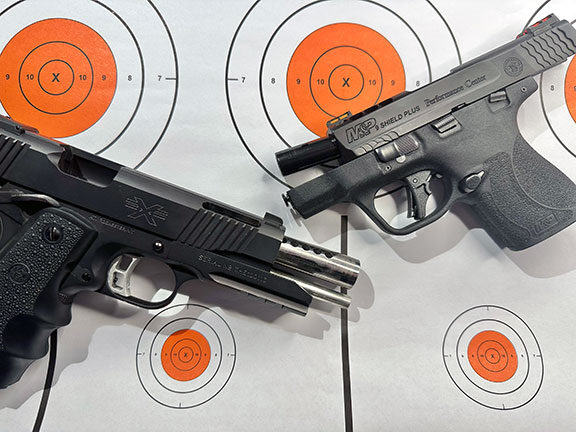
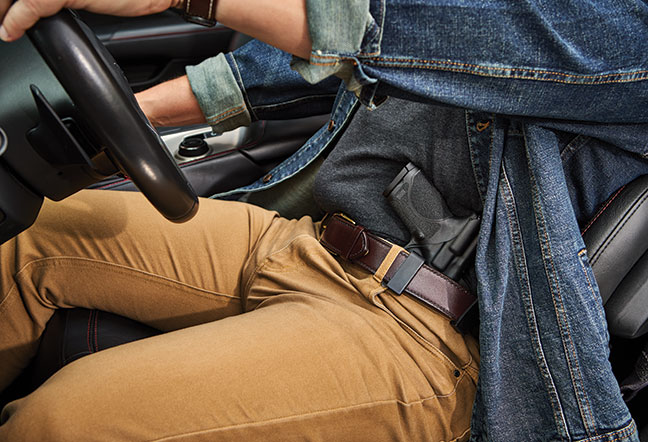




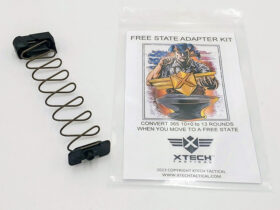
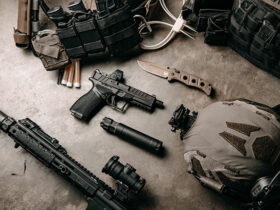
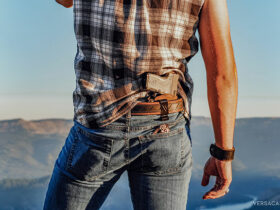
Leave a Reply